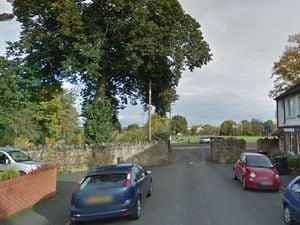Shrewsbury homes plan remains despite court ruling
A potential loophole in the law that protects public recreation grounds against development has been highlighted by a High Court ruling over land in Shrewsbury.

The case concerned planning permission granted by Shropshire Council in November last year for 15 homes and an access road off Falstaff Street in the town.
Local campaigner Peter Day said the site was part of the Greenfields Recreation Ground and that it was therefore held on trust for the public benefit.
And, after trawling through evidence dating back to the early 20th Century, Mrs Justice Lang accepted that he was “very likely” to be right about that.
However, the judge went on to rule that any public rights over the site “cannot be enforced” against a developer who bought most of it in 2017.
The site was part of two plots of land that were purchased by the long defunct Council of the Borough of Shrewsbury for £1,000 in the 1920s.
The land was bought in response to a need for public playing fields to protect local children from fast-moving traffic, the High Court heard.
There was evidence that the site had been used for allotments during World War II and later as a tree nursery.
But Mr Day argued that that did not change the fact that it was, and always had been, part of the recreation ground.
'Far too late'
Greenfields Recreation Ground came into the ownership of Shrewsbury Town Council following a local government reorganisation in 2010, but it sold most of the development site to CSE Developments (Shropshire) Limited, which sought and obtained the planning permission.
Ruling on the case, the judge said Shropshire Council had approached the issue of the land’s status on a mistaken legal basis. However, the judge went on to rule that it was now far too late to mount a judicial review to challenge the town council’s disposal of the site to the developer.
The terms of the Local Government Act 1972, she added, meant that any public rights over the site “cannot be enforced against the buyer.”
She added: “I recognise that this interpretation will have the unfortunate effect of depriving local residents of the enjoyment of part of the recreation ground which was very probably held in trust for their use.”
But the judge concluded that, even had Shropshire Council taken the correct legal approach, it was “highly likely” that planning permission would have been granted on the basis that public rights over the site were no longer enforceable.
Despite the success of Mr Day’s central argument in the case, the judge refused to quash the planning permission.





